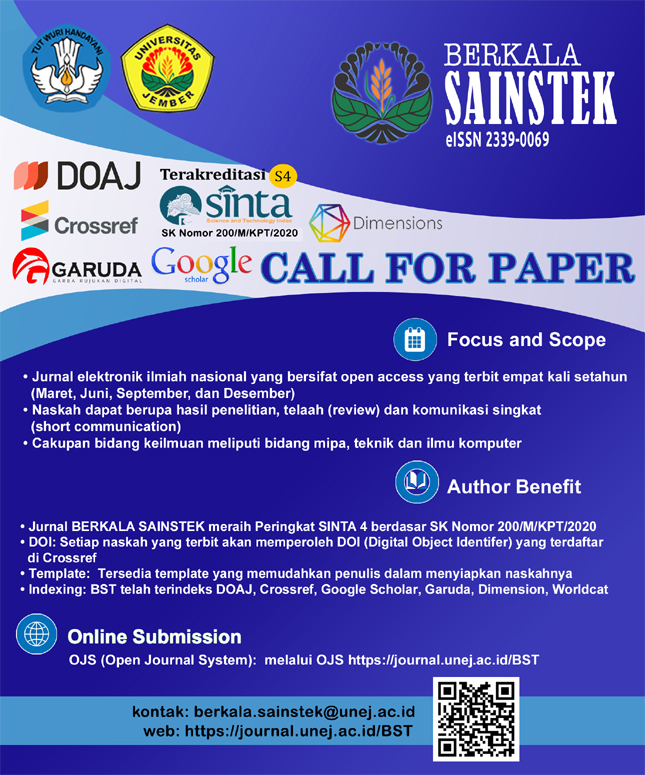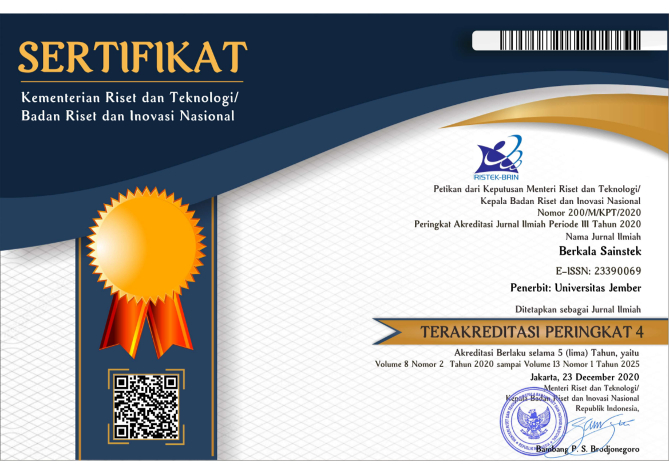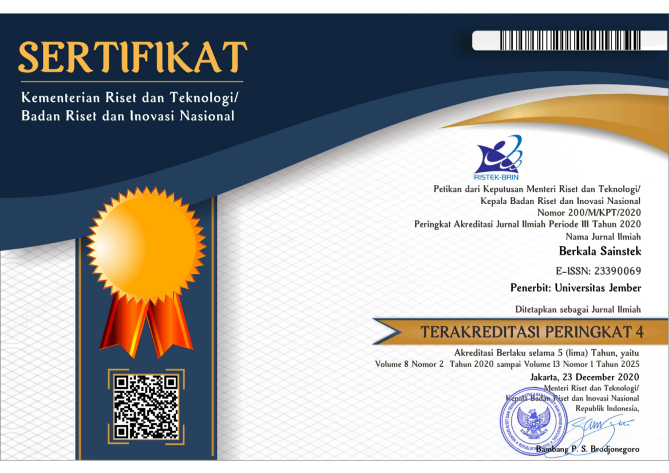Zodia (Evodia suaveolens) Leaves as Natural Mosquito Repellent Material: Effectiveness Test of Distillation Methods
DOI:
https://doi.org/10.19184/bst.v12i4.53351Keywords:
Essential oils, hydrodistillation, steam distillation, steam-hydrodistillation, zodia leavesAbstract
Indonesia has around 40 types of plants with essential oil content from a total of around 150 types of essential oils traded in the international market. Essential oils are produced from various parts of aromatic plants such as fruits, seeds, leaves, flowers, roots, stems, bark, and even the entire tree. One of the plants that contains and has the potential to produce essential oils is the zodia (Evodia suaveolens), especially the leaves. Evodone is one of the active compounds contained in the essential oil of zodia leaves which has the ability as a mosquito repellent. This study aims to determine the effectiveness of hydrodistillation, steam-hydrodistillation, and steam distillation in terms of yield, physical properties, and active insecticide compound content. A total of 1000 g of fresh zodia leaves were put into a distillation kettle either boiled, steamed, or in direct contact with steam for three hours at 100 °C and atmospheric pressure. The remaining water content in the essential oil from the distillate was then absorbed with Na2SO4. Furthermore, the water-free essential oil was tested for its physical properties consisting of density, optical rotation, refractive index, and color tests, and then its chemical composition was analyzed using GC-MS. The results showed that the yield for hydrodistillation, steam-hydrodistillation, and steam distillation were 0.37%; 0.43%; and 0.31%, respectively. From the optical rotation test, the essential oil from steam distillation had the lowest value indicating the highest level of purity compared to the other two methods. This is in accordance with the density and refractive index data, where the essential oil from steam distillation had the highest value, where the color was darker. Meanwhile, based on the results of GC-MS analysis, the highest active insecticide compound in the form of evodone was obtained from steam-hydrodistillation (14.25%), followed by hydrodistillation (7.62%), and steam distillation (4.81%).
Downloads
Downloads
Published
Issue
Section
License
Copyright (c) 2024 Aisyah Sumalyani, Sholeh Ma'mun, Riyanto Riyanto

This work is licensed under a Creative Commons Attribution-NonCommercial 4.0 International License.







